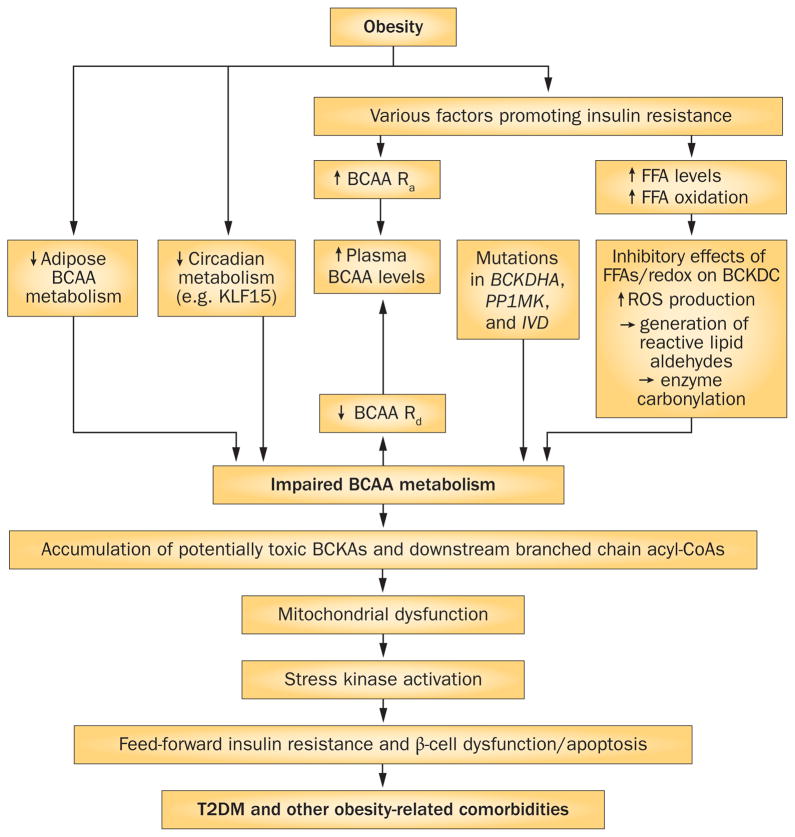Figure 3.
BCAA dysmetabolism links elevated plasma levels of BCAAs and FFAs to T2DM and obesity-related comorbidities. The schematic shows how obesity might affect a number of factors contributing to elevated circulating BCAA levels via effects on the Ra or Rd of BCAAs. Loss of steps in BCAA metabolism could lead to the accumulation in tissues of BCKAs and BCAA-related acyl-CoAs. Accumulation of these species in inherited disorders can be mitotoxic and might lead to T2DM and other obesity-related comorbidities. A caveat is that while the metabolites of BCAAs are potentially toxic in maple syrup urine disease and organic acidurias, their role in T2DM-associated mitochondrial dysfunction or in activation of stress kinases is unknown. Alternatively, reduced or incomplete valine and isoleucine catabolism could attenuate anaplerosis from these substrates, contributing to anaplerotic stress in one or more tissues affected by T2DM. Abbreviations: BCAA, branched-chain amino acid; BCKA, branched-chain α-keto acid; BCKDC, branched-chain α-keto acid dehydrogenase complex; CoA, coenzyme A; FFA, free fatty acid; KLF15, Krueppel-like factor 15; Ra, rate of appearance; Rd, rate of disappearance; ROS, reactive oxygen species; T2DM, type 2 diabetes mellitus.

